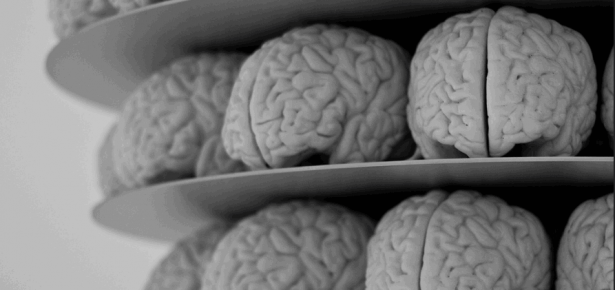
Forgetting in everyday life can usually be attributed to a failure to attend to information. This could be for numerous reasons such as not being interested in the material, being distracted by a cell phone, being sleepy, or thinking about something else. Attention has been shown to be a key aspect of encoding information, even when it is not known that memory will be tested later. For instance, if participants are asked to deeply process words, such as deciding whether each word in a study list is “pleasant” or “unpleasant”, their memory performance will be similar whether or not they know there is a subsequent memory test. This illustrates that successful memory encoding requires attention, rather than the knowledge that the information will be tested at a later time.
The brain regions associated with successful memory encoding are identified using a subsequent memory analysis. For a subsequent memory analysis, a standard memory paradigm is employed. A list of items is presented during the study phase, and then during the test phase participants are presented with old and new items and decide whether each item is “old” or “new”. After the experiment is complete, each item presented during the study phase is classified based on the response given to that item during the test phase. For example, if the words ‘wolf’ and ‘ocean’, along with other words, are presented during the study phase, and the responses to those words during the test phase were “old” and “new”, respectively, the words at encoding would be classified as subsequently remembered (a subsequent “old” response to an old word, e.g., responding “old” to ‘wolf’) and subsequently forgotten (a subsequent “new” response to an old word, e.g., responding “new” to ‘ocean’). Brain activity associated with successful encoding is identified by contrasting subsequently remembered items and subsequently forgotten items.
Successful memory encoding has been associated with activity in the dorsolateral prefrontal cortex, the parietal cortex, and the medial temporal lobe, the three key brain regions associated with successful memory retrieval. Otten and Rugg (2001) did something unusual. They flipped the typical contrast of subsequently remembered items and subsequently forgotten items and compared subsequently forgotten items to subsequently remembered items. They reported subsequent forgetting activity across two studies in the dorsolateral prefrontal cortex, the inferior parietal cortex, and the medial parietal cortex. Motivated by these findings, Wagner and Davachi (2001) reanalyzed their own data from two previously published subsequent memory studies and found subsequent forgetting activity in the same regions reported by Otten and Rugg in addition to activity within the medial prefrontal cortex. An analysis of seventeen subsequent memory studies showed consistent activity in the same regions, the dorsolateral prefrontal cortex, the medial prefrontal cortex, the inferior parietal cortex, and the medial parietal cortex (Kim, 2011).
Subsequent forgetting activity in the dorsolateral prefrontal cortex and the parietal cortex may appear strange given that subsequent remembering activity has been associated with the same regions. However, distinct sub-regions of the frontal cortex and the parietal cortex have been associated with subsequent remembering and subsequent forgetting. Logically, this must be the case as the comparison between subsequent remembering and subsequent forgetting cannot activate exactly the same region as the opposite comparison between subsequent forgetting and subsequent remembering. That is, if brain activity is positive in magnitude for one of these comparisons, it cannot also be positive in magnitude (and must be negative in magnitude) for the other comparison (e.g., 5 – 3 = +2 and 3 – 5 = –2).
The pattern of brain activity associated with subsequent forgetting is the same as the pattern of brain activity that is referred to as the default network. The default network consists of the regions of the brain that become active when participants are not engaged in any particular task, such as when they lay quietly with their eyes closed or wait between experimental trials. This network of brain activity has been associated with many cognitive states, such as day dreaming, mind wandering, lapses of attention, retrieval of personal information, and planning for the future (Buckner, Andrews-Hanna, Schacter, 2008). In memory research, it is typically assumed that forgetting is due only to inattention. However, the previous results indicate forgetting could also be due to active cognitive functions such as retrieval of personal information or planning for the future. Of particular importance, default network activity indicates participants aren’t engaged in the experimental task. As such, it is not surprising that the default network has been associated with encoding trials that were subsequently forgotten. The participants were not attending to the stimuli during those trials, but were rather engaged in some other mental process. These results indicate that to minimize forgetting, one should maintain attention to the information that is being presented. In the real world, this translates into minimizing distractions and attending to information that is important. For instance, it is known that people learn better when they are not multitasking (e.g., texting or day dreaming). To avoid forgetting, one needs to focus attention and stay engaged with the task at hand.
Check out the rest of the memory series blogs:
Part 1: Superior Memory Does Not Come Without a Cost
Part 2: Is the Hippocampus Associated with Implicit Memory?
Part 3: The Brain Basis of Forgetting
Part 4: Episodic Memory in Mammals
Part 5: The Consolidation Debate
Latest Comments
Have your say!